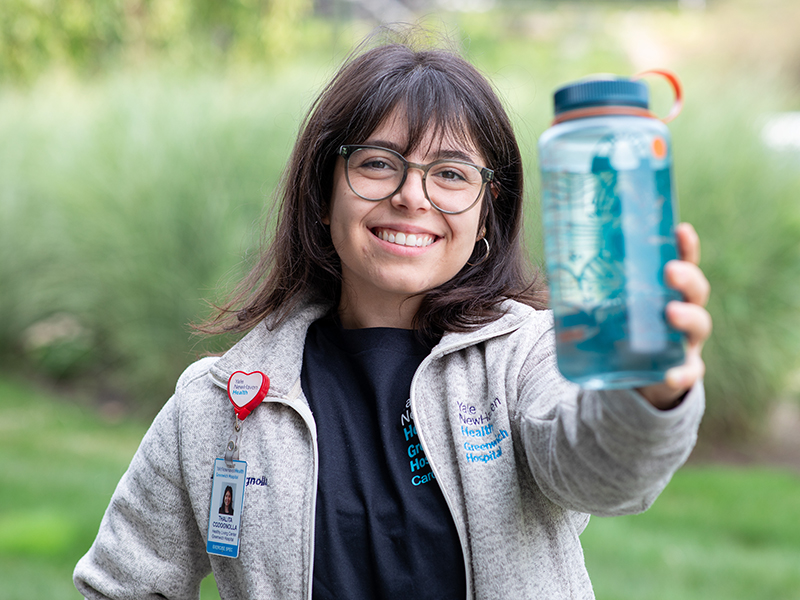-
Services
Featured Services
-
Locations
Location Type
Hospitals and Multispecialty Locations
-
Patients & Visitors
 Thalita Codognolla, a certified exercise specialist,, stays hydrated during her workoutl.
Thalita Codognolla, a certified exercise specialist,, stays hydrated during her workoutl.
No matter what your level of expertise, taking a few minutes to properly warm up and cool down before hiking can maximize a workout and prevent injuries, according to Thalita Codognolla, a certified exercise specialist at Greenwich Hospital’s Center for Healthy Living.
“Warming up before you start exercising gets the blood flowing and body moving to increase flexibility and avoid injuries,” said Codognolla. She recommends doing static and dynamic stretches for 5 to 10 minutes before and after a hike. Static stretches involve holding a single pose (no joint motion) for up to 30 seconds. Dynamic stretches involve moving a variety of muscle groups, such as marching in place or using a wide gait when walking.
Uphill hiking is an aerobic exercise that engages various muscle groups to work against gravity, making it a form of resistance exercise as well, explained Codognolla. “Hikers can also carry a backpack or hike with added weight to further increase the resistance, making it a more challenging workout for the muscles,” she said.
Cooling down after a hike is as crucial as warming up. “You want to gradually and safely transition from the high demands of exercising to a resting phase by slowly bringing your heart rate down and cooling off your body,” Codognolla said. Drink plenty of water before, during and after a hike because the capacity to exercise decreases with dehydration. Early dehydration signs include thirst, flushed skin, fatigue, muscle cramps, and increased body temperature and heart rate. Serious symptoms include weakness, dizziness, confusion, dry skin and fainting.
“You may faint because your blood pressure is so low that your heart has to work harder to pump blood,” said Codognolla.
If you are new to hiking or resuming the activity after a long pause, start off with an easy trail. “Set small goals and slowly work your way up to more challenging hikes,” Codognolla advises. “You’ll be amazed by your progress.”